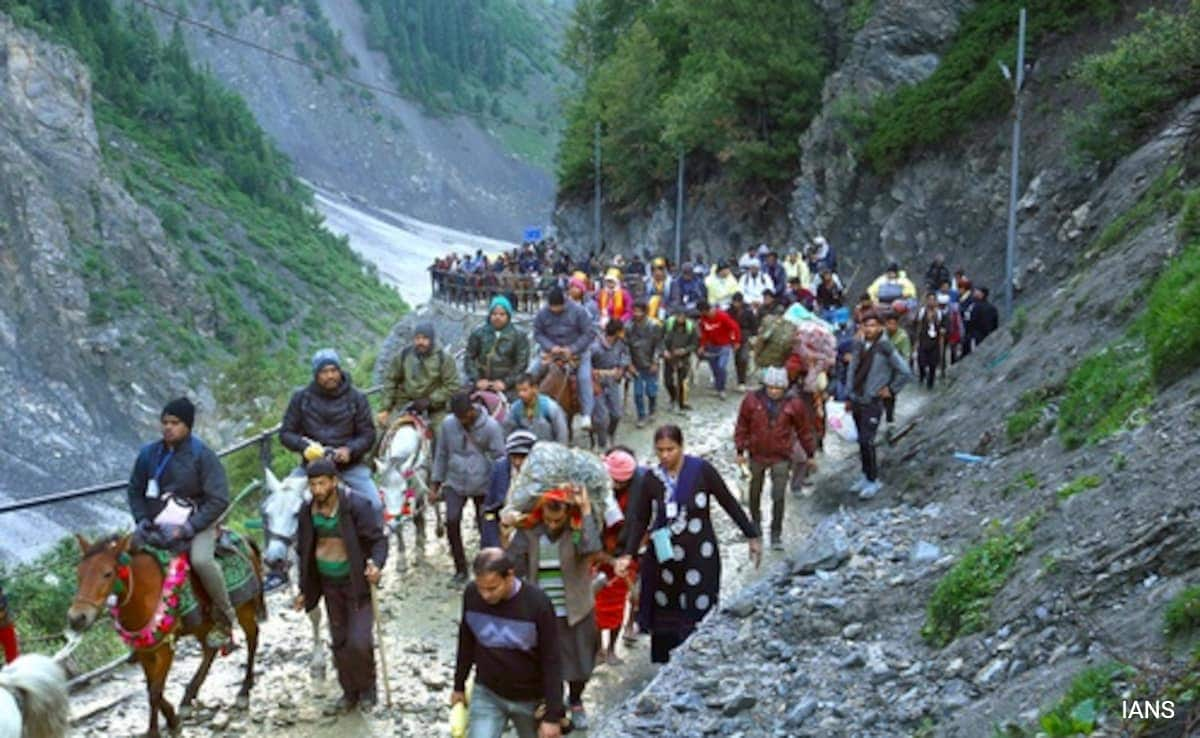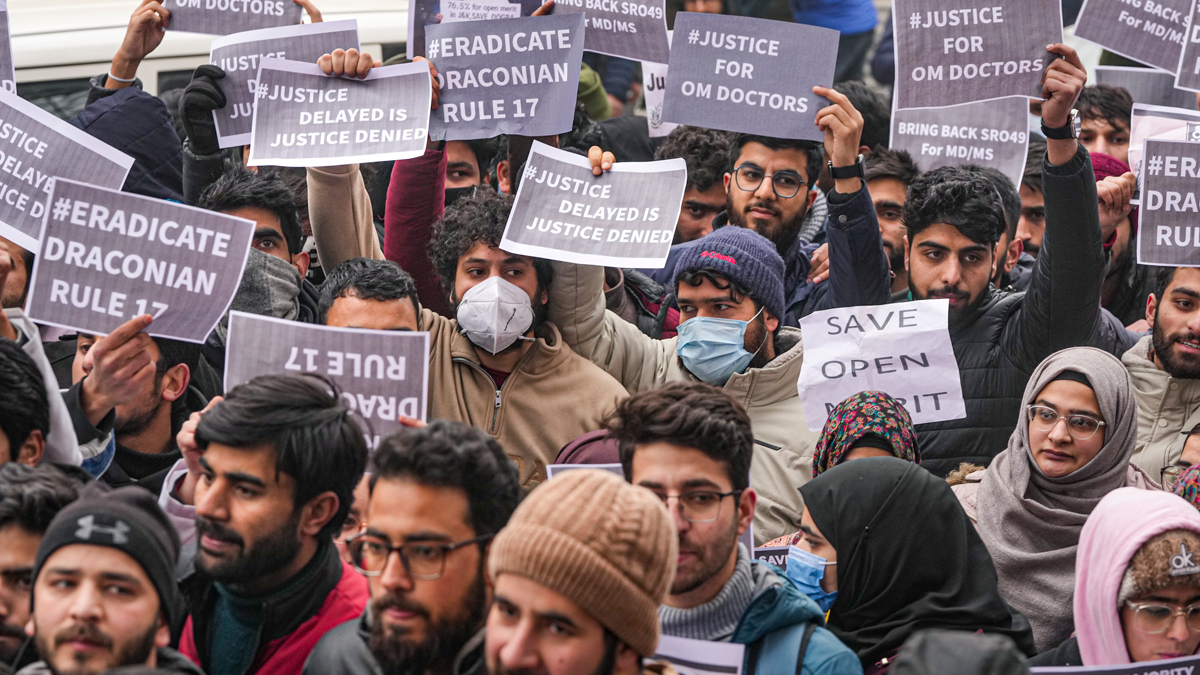From Faith to Forensics: Technology Meets Tradition in Terror-Hit Pahalgam
Srinagar 10 June 2025: In a bold move to secure one of India’s most sacred pilgrimages, facial recognition systems (FRS) have been installed along the Amarnath Yatra route in Jammu & Kashmir’s Pahalgam sector. The initiative follows the April 22 terror attack that killed 26 civilians, triggering national outrage and concerns over the safety of devotees.
The deployment is not just a tactical response—it represents a paradigm shift in how India is integrating AI-powered surveillance into sensitive, high-risk religious events.
Real-Time Recognition: How the System Works
The FRS infrastructure, now active across key points along the Pahalgam leg of the Yatra route, uses live video feeds to detect and identify individuals in real time. Here’s how it functions:
-
Preloaded Database: Security agencies have loaded the system with images of blacklisted individuals, including known terrorists, suspected overground workers, and absconders.
-
AI-Powered Facial Matching: Using biometric algorithms, the system continuously scans faces in crowds, comparing them against the database.
-
Instant Alerts: When a match is detected, a hooter is automatically triggered at the surveillance control center, enabling immediate action.
-
Integrated Response: Alerts are simultaneously relayed to nearby CRPF and J&K police units, allowing ground teams to intercept suspects in real time.
This is a significant step up from previous years, where reliance was largely on manual screening and identity card checks.
Expansion Plans: Baltal Route to Be Covered Next
With the Amarnath Yatra 2025 scheduled to begin on July 3 and conclude on August 9 (Raksha Bandhan), officials are racing to expand the FRS system to the Baltal route, the alternate track used by many pilgrims.
Authorities confirm:
-
High-definition cameras with night-vision capabilities will be installed.
-
Surveillance nodes will be embedded within base camps, rest halts, and critical bottlenecks.
The goal is to have complete coverage of both primary Yatra routes before the influx of over 300,000 registered pilgrims begins.
Layered Security: FRS as Part of a Larger Tech Suite
Facial recognition is just one layer in a multi-pronged security grid being deployed for this year’s Yatra:
-
🛰️ RFID-Based Tracking: All pilgrims will be provided Radio Frequency Identification (RFID) tags, allowing real-time location tracking.
-
📹 Widespread CCTV Network: Surveillance cameras have been placed at checkpoints, langars, helipads, and camping sites.
-
🚁 Aerial Surveillance: Drones will patrol vulnerable stretches of the route to detect any movement in forested or mountainous terrain.
-
🚓 Dynamic Checkposts: Quick-reaction teams are stationed at strategic intervals, coordinated via a unified control command center.
Official Stance: “Faith Must Not Be Held Hostage to Fear”
Senior security officials emphasized that these measures are not aimed at surveillance of citizens, but the safety of pilgrims. A high-ranking CRPF officer stated:
“Every year, lakhs of people undertake this difficult yet spiritual journey. The recent violence cannot be allowed to cast a shadow on their faith. Technology must be our ally in protecting lives.”
Local administration in Anantnag and Ganderbal districts echoed this sentiment, adding that transparency protocols and data protection norms are being observed to prevent misuse of biometric data.
Pilgrim Sentiment: Confidence Rising, But Caution Lingers
Despite the chilling effect of the April terror incident, enthusiasm for the Amarnath Yatra remains strong:
-
Over 3 lakh pilgrims have registered through official channels.
-
Private tour operators are witnessing a steady rebound in group bookings.
-
Helicopter services from Baltal and Pahalgam are nearly 90% booked for the first two weeks of July.
However, pilgrims and families are demanding clear communication from the authorities on safety arrangements, emergency services, and response timelines.
Analysis: Between Sacredness and Surveillance
This year’s Yatra underscores a growing trend in India’s approach to securing large religious gatherings in conflict zones:
Smart surveillance + real-time analytics = proactive threat mitigation.
But this also invites questions:
-
What are the long-term implications of normalizing biometric surveillance in religious spaces?
-
Will data collected during Yatra be deleted post-pilgrimage?
-
Can this tech infrastructure be misused under less accountable conditions?
While the intent—safety—is indisputable, the implementation must be anchored in transparency and rights protections to avoid unintended overreach.
Discover Jammu & Kashmir Like Never Before with JKL Travels!
Whether you’re dreaming of a romantic honeymoon, a peaceful pilgrimage, or a rejuvenating leisure escape, JKL Travels has the perfect plan for you — with unbeatable deals and personalized packages!
Spiritual serenity | Couple retreats | Scenic adventures All under one roof — crafted with care, delivered with passion.
Book now with JKL Travels — where your journey begins and memories last forever!
Bottom-Line: Safeguarding Faith, One Face at a Time
In the rugged terrains of the Himalayas, faith has always found a way to ascend. But this year, it ascends under the watchful eyes of cameras and code.
The introduction of facial recognition systems on the Amarnath Yatra route is not just about spotting threats—it’s about reassuring devotees, deterring attackers, and ensuring the sacred remains secure.
As the first pilgrims prepare to begin their journey on July 3, the message from Pahalgam is clear: the Valley may still face shadows, but it is no longer unguarded.



